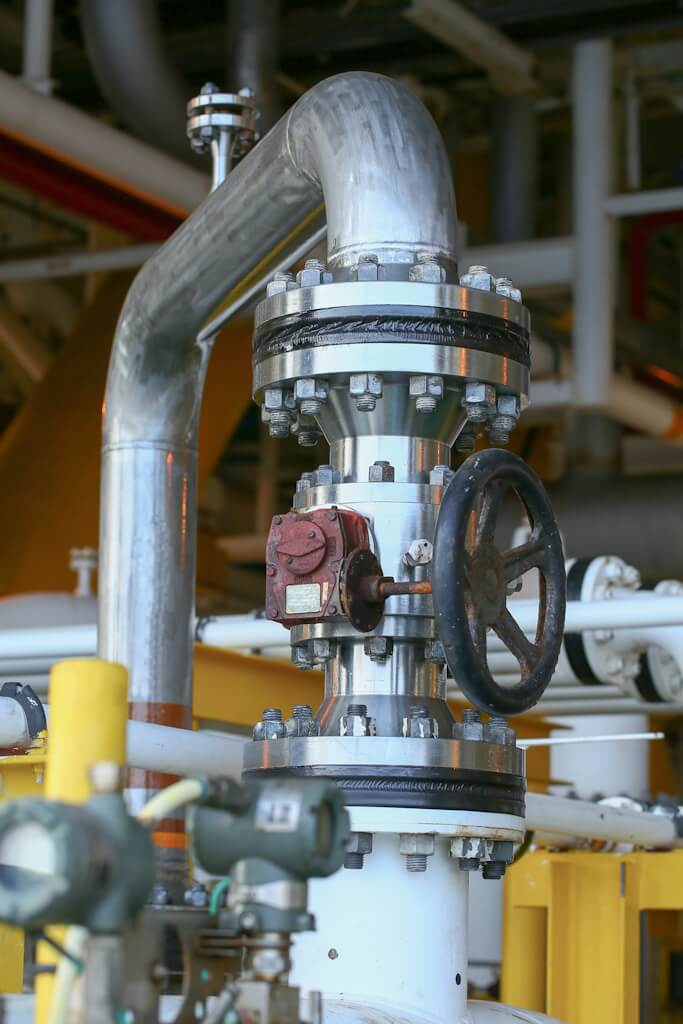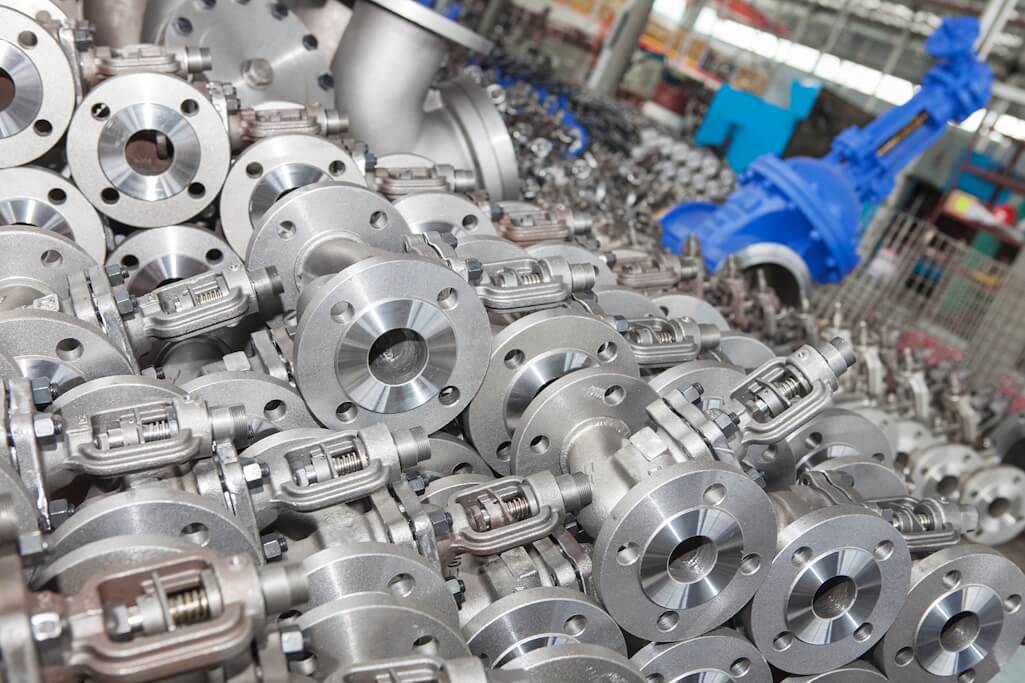The valve body, plug, and operating components should be able to withstand the highest temperatures under continuous normal and transient operating conditions, as well as the highest transient pressures expected.
Valves are essential to many industries and are used under all sorts of circumstances. While their application usually determines the optimal materials for the specific valve, stainless steel offers properties that can be very beneficial.
By Srikumar Chakraborty, ex ASP/SAIL, Freelance Consultant
Valves play a vital role in any piping system in the chemical, oil, and gas industries. Stainless steel, with its properties of strength, ductility, corrosion and heat resistance, low maintenance and unlimited lifecycle, has become an obvious choice due to its low cost. By adding alloys like chromium (Cr), nickel (Ni), molybdenum (Mo), manganese (Mn), and silicon (Si), stainless steel can attain higher degrees of corrosion resistance, durability, high temperature and pressure tolerance, and versatility. Stainless steel is ideally suited for aggressive environments, which in industrial applications include pharmaceutical and food and drink manufacturing processes that take their toll on processing equipment. In such demanding applications, stainless steel is a good material for valves because of its favourable lifecycle cost.
Valve selection for the chemical industry
Valves are critical components with a wide range of applications, from power plants to water systems. The fundamentals of valve selection should be considered to ensure optimal performance and safety. When selecting chemical valves, the most important elements to consider are the chemical properties of the working medium, the product being handled, temperature and pressure. The valve body, plug, and operating components should be able to withstand the highest temperatures under continuous normal and transient operating conditions, as well as the highest transient pressures expected. Finally, the field requirements for leakage should be considered.
Materials
Common materials for the valve body and area of applications are:
- Grey cast iron/carbon steel: unsuitable for use in seawater without cathodic protection or coating.
- Austenitic (Ni Resistant): for seawater, brackish water, and wastewater.
- Stainless steel: generally good corrosion resistance to water, alkalis, minerals, and dry solvents.
- Type austenitic 304: unsuitable for use in seawater, unlike 316. 316 will likely be subjected to crevice corrosion without galvanic coating or use of 316L/ 316 ELC.
- Duplex: more corrosion resistant, especially regarding stress corrosion cracking.
- Super austenitic: excellent corrosion resistance to a wide range of fluids, seawater, brine solution, caustic, and any mineral acid.
- Super duplex: for caustic and mineral acids.
Valve manufacturing process
Based on the relevant requirements, industrial valve manufacturers consider the advantages and disadvantages of casting and forging methods. Choosing which method to employ depends on factors such as desired strength, design complexity, production volume, and budget constraints. By understanding the pros and cons of each method, manufacturers can optimise their valve manufacturing process for various applications.
At first glance, valves may seem to consist of a few parts, but sealing is complex, particularly when demanding zero leakage during fluid/gas-tight testing. This complicates the manufacturing process. Due to the wide variety of valve specifications and the presence of the valves in all types of environments, the material requirements for stainless steel are very strict. However, valve manufacturers perform a bubble seal test before the valve leaves the factory. Here, the seat is tested for significant leakage. Other key parameters include flow speed, valve function (on/off or modulating), whether fire safety is required, and other additional functional requirements.
Casting process
The correct and effective control of casting solidification is the first important condition for obtaining quality products. This process programme includes the pouring system, riser, and complementary process amount. Due to their uneven wall thickness, valve parts cast in steel should undergo sequential cooling and sequential solidification to reduce the internal stress of the casting, shrinkage, and other defects. Attention should be paid to design, the pouring system, correct pouring positioning, riser design, volume shrinkage calculations, and shrinkage control. In the machinery industry, thin shell casting is more complex and difficult. However, valve casting is an important part of the manufacturing process, as good casting determines the success of a valve.

Forging process
Forging a valve involves correctly shaping stainless steel, heating, and pressing the block with industrial tools at forging temperature. Industrial forged valves are generally used on small, high-grade pipelines with high processing costs. Forged valves have increased performance in severe service and high-temperature applications. The forging process eliminates surface porosity, removes internal voids, decreases wall thickness, and allows for a smaller temperature gradient and less thermal fatigue.
Forged valves can withstand the stresses of high-temperature applications and high pressures without compromising their integrity while boasting better corrosion/heat resistance, tensile strength, higher strength, ductility, durability, and a significantly increased lifecycle than cast valves. The wall thickness doesn’t affect the functionality of the valve. The benefits of forged valves include minimising wasted material (due to the fact they are shaped in one solid piece), and the valves’ ability to handle high temperatures and high pressure well with minimal shrinkage, porosity, and cracks. They are ideal for applications in the nuclear, oil and gas and power generation segments.
Thermal fatigue reduction is a major benefit of forged valves as they have a thinner wall, which means if they are heated or cooled quickly, it won’t be detrimental to the valve’s functionality.
Valve inspection and testing
Reliability and longevity are of vital for valves, and testing allows for making adjustments and repairs where necessary. Therefore, until the product reaches the customer, it must be thoroughly inspected and tested to ensure it complies with international standards.
However, the testing and inspection conditions are unlikely to meet the same requirements as the working conditions; international and domestic valve test standards are close to room temperature conditions, and gas or water are used for testing. This is one of the most fundamental pitfalls of factory testing, as harsh conditions may arise in the client’s working environment due to material selection, casting quality, sealing damage, and other issues, in addition to accidents.

Stainless steel valves
Valve bodies of stainless steel are manufactured by casting and forging. Investment cast products are corrosion- and heat-resistant but suffer from low formability, low strength, and brittleness. Investment casting is only suitable for geometrically complex shapes. Forged valves are more durable and have a high degree of dimensional accuracy with uniform wall thickness, a longer lifecycle and can be used in a wider range of applications. Cost, quality, and the area of application should be considered for forged valves. Their most desirable properties are high strength, durability, heat and corrosion resistance. Clear rules and regulations should be established to standardise suitable working temperatures for the valve body material.
Additionally, from the technical, production management, and procurement aspects, steel grades should be chosen based on performance to ensure they withstand high pressure and fluid flow rates to increase the valve’s lifespan and reliability. Industries need not be worried about rust or corrosion. For this reason, stainless steel valves have become the top choice for most industrial applications where other metals are susceptible to corrosion.
Characteristics of stainless valves
Grade 304 is the most common and widely used valve material in the 300 series as it has excellent resistance to corrosion in most applications. Grade 316 is more resistant to sulfuric acid and sulfurous acids, acetic acid, iodides, bromides, chlorides, and fatty acids at higher temperatures and has good resistance to pitting corrosion. The most commonly used steel grades in the austenitic family for stainless steel valves are 304, 304L, 316, and 316L. Moreover, 304 is especially suited for high-temperature applications such as forging, stamping, and bending without hardening in heat treatment. It is non-magnetic and is safe to work with up to temperatures of 196 – 800 °C.
As a low-carbon stainless steel, 304L’s corrosion resistance is similar to that of 304 under normal conditions, but it has excellent resistance to intergranular corrosion after welding or stress relief.
After that, it can operate in the same range of temperatures. Grade 316 stainless steel has excellent pitting corrosion resistance, atmospheric corrosion resistance and high-temperature strength. It can be used in very severe conditions because of the addition of molybdenum, making it suitable for use in seawater. 316L stainless steel (low carbon) has excellent resistance to intergranular and grain-boundary corrosion and has the same characteristics as 316 steel. Chemical valve selection requires special consideration of the scientific nature of the valve material. Usually, there is a misunderstanding that stainless steel is a ‘universal material,’ regardless of the media and environmental conditions present.
Conclusion
As mechanical devices, valves are fitted in pipelines in chemical and other industries to control the movement and flow of liquids, fluids, powders, and gases. Generally, stainless steel valves have various applications due to their excellent performance in terms of temperature limits, corrosion resistance, and high-pressure tolerance. Considering the total cost of stainless steel for valves, it is the most cost-efficient material in terms of lifecycle cost as well as the direct and indirect costs of replacements, maintenance, and performance.
About this Featured Story
This Featured Story appeared in Stainless Steel World March 2024 magazine. To read many more articles like these on an (almost) monthly basis, subscribe to our magazine (available in print and digital format) – SUBSCRIPTIONS TO OUR DIGITAL VERSION ARE NOW FREE.
Every week we share a new Featured Story with our Stainless Steel community. Join us and let’s share your Featured Story on Stainless Steel World online and in print.


